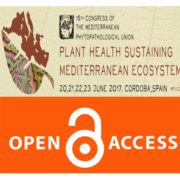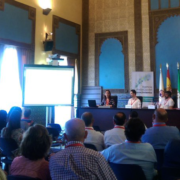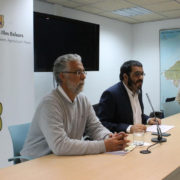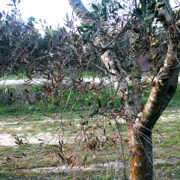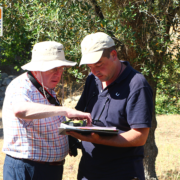Olive quick decline and Xylella fastidiosa in Southern Italy: the state of the art
Proceedings of the 15th Congress of the Mediterranean Phytopathological Union (MPU 2017), Cordoba, Spain, 20-23 June 2017. doi.org/10.5281/zenodo.830600
Boscia, Donato1 ; Saponari, Maria1
1 CNR-Institute for Sustainable Plant Protection, Bari, Italy
Abstract Oral Presentation
The identification in 2013 of an outbreak of Xylella fastidiosa (Xf) in olive groves in the Salento peninsula (southern Italy) resulted in a plant health emergency of unprecedented proportions for the EU. Infected olive trees show extensive desiccation of the canopy and severe quick decline symptoms. In the outbreak area, the bacterium was found to be efficiently spread by the meadow spittlebug Philaenus spumarius, abundant on the olive canopies during the dry season. The initial demarcated foci rapidly expanded over the past 4 years, establishing a new demarcation line distant 80 km from the first reported outbreak; while few species were found infected in 2013 the currently known susceptible hosts reached the number of ca. 30 different plant species. Phytosanitary measures to combat the spread and mitigate the impact of the bacterial infections, included restrictions for the new plantations, for the movement of propagating materials and removal of infected trees. The severe damage suffered by the infected olive trees combined with the imposed phytosanitary restrictions determined severe economic and social impacts in the local community, raising major concerns against the application of the containment measures and determining the failure to implement timely, effective and coordinated preventive measures. Due to the novelty of the Xylella‐associated disease in olives and in general the fact that Xf is conquering new geographical area, like the EU territories, the EU Commission mobilized dedicated resources to build EU research actions to fulfil research gaps for this emerging pathogen threatening the entire EU territory. Between 2015 and 2016, two relevant research projects in the framework of the H2020 programs have been funded: the project “Pest Organisms Threatening Europe” (POnTE) and the project “Xylella Fastidiosa Active Containment Through a multidisciplinary‐Oriented Research Strategy” (XF‐ACTORS) the latter targeting exclusively Xf. From the intense research activity developed in the past three years some major results have been already achieved, providing data on the genetic and biological properties of the population of the bacterium, the range of hosts, the identification and biology of the vector, the identification of olive cultivars with promising traits of resistance.
Published on June, 2017 by MPU

